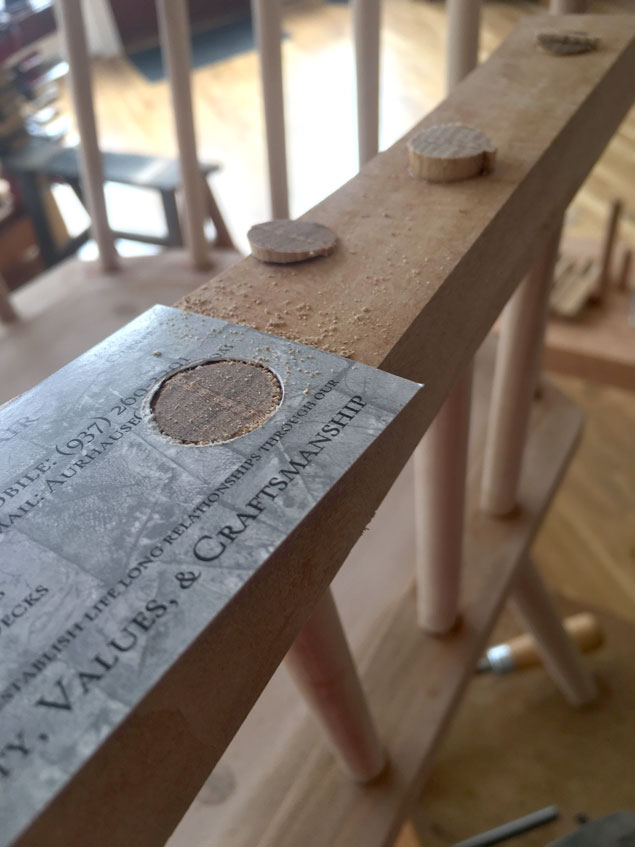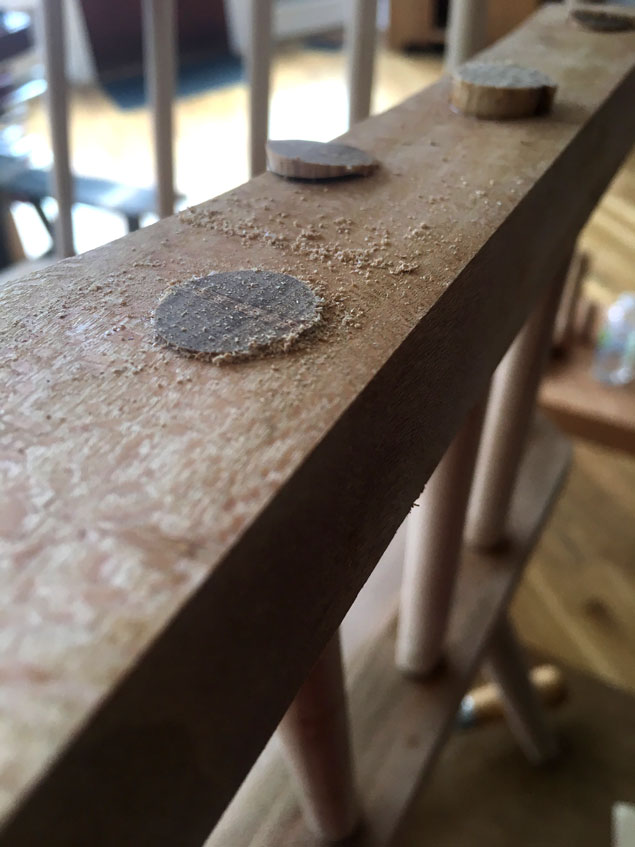We may receive a commission when you use our affiliate links. However, this does not impact our recommendations.
Flush-cutting saws offer an amazing promise: They can cut a dowel or tenon flush to its surrounding surface without causing any damage. The truth is, however, no matter how awesome your flush-cutting saw or how skilled you are, things can go wrong.
The most common problem is the saw can drift slightly. And with a flush-cutting saw, any drifting can be disastrous. The teeth can dive into the work after just a stroke or two. And this can happen even if you are doing everything perfectly. The wood can pinch the blade and deflect it down into the work. Or you can encounter some dense spots (perhaps a wedge in the tenon), deflecting the blade. Or you hit a patch of glue, which gums the teeth and changes the way the saw cuts.
After flush-cutting too many tenons to count in my life, I gave up on trying to cut things flush like they show it in the tool catalogs. Instead, my plan of attack makes things a little more complex, but I never have a saw dive into my work as a result.
The trick is a business card. I prefer thinner ones, but any card will do. Then I bore a hole through the business card that is slightly larger than the tenon. (The tenons shown here are 5/8” in diameter and wedged; a 3/4” hole works great.)
I slip the business card over the tenon then use that as a platform for sawing. If I chew up the business card, it’s no big deal. I throw it away and get another.
What’s left after sawing is a tenon that is about 1/32” or less proud of the surrounding surface. This is easy to take down with a plane or a file.
You might object to this method and say it makes more work. But I know that it saves time in the overall. I never have to fix a problem where the saw has deeply scarred the wood around the tenon. So on the whole, it’s a win.
— Christopher Schwarz
 Editor’s note: Want to learn more about saws of all types and how to saw? Check out Chris’s “Handsaw Essentials,” available as an eBook at ShopWoodworking.com.
Editor’s note: Want to learn more about saws of all types and how to saw? Check out Chris’s “Handsaw Essentials,” available as an eBook at ShopWoodworking.com.
Here are some supplies and tools we find essential in our everyday work around the shop. We may receive a commission from sales referred by our links; however, we have carefully selected these products for their usefulness and quality.











Great tip. I’ve been taping thin metal on either side of the dowel/tenon for years and then finishing up with a good sharp chisel and block plane. Really enjoy all of your videos, and have learned a lot.
Regards
I have found success using a loose playing card when cutting miter keys. However, I will try the business card next time.
In a pinch I have used A dollar bill. Now that I buy Lie-Neilson and festool I use a 100 dollar bill.
Chris, do you still use the flush-cut saw with the business card, or a regular saw?
Blue tape improvement: two strips like a “<" sign, across the full length/diameter of the tenon, for the saw to ride along. Nothing sticks to the saw, and you don't have to bore a hole in a business card.
Hi Chris,
I agree about the shortcomings of flush-cut saws. I covered the topic and offered a solution in this 2012 post on my blog: http://www.rpwoodwork.com/blog/2012/12/16/flush-cutting-options-and-an-easy-trick/ Details and photos are in the post but here is a summary.
The flush-cut saws with no set tend to bind, and also deviate away from the surface. The flush-cut saws with one-sided set are awful – they deviate away from the surface a lot.
The solution is to put blue tape on the down side of the saw. Keep the tape far enough from the toothline to allow a reasonable depth of cut. For my Gyokucho 05 Japanese backless crosscut saw, two layers of blue tape slightly exceed the tooth set, which creates a very thin (say, 2 thou), but very reliable, clearance of the teeth from the surface. Thus, you can leave very little projection remaining to pare.
By the way fellow readers, I copied this from no one and published it in 2014 in FW, but as with probably 99% of woodworking tips and tricks, I am surely not the only one who’s thought of it. The important thing is to share our shop experience so we all can benefit.
Happy woodworking,
Rob
I’ve had 3 of these saws and I finally realized that I was risking a big mistake if I put my faith in the claim that they will do as advertised. (I broke one of them over my knee after it took a dive into a rail. Thank heavens for hide glue.) Instead of a business card, I use one of the 2567 temporary trial membership cards I get monthly from the AARP. (Good, well-meaning folks but a tad too persistent for my taste.) The cards are “plasticized” or “infused” or whatever you call it, but they’re a little more resilient than a business card.
Thanks for the blue tape idea. Brilliant. Now watch someone claim it as their own.
nice technique
I find a bit of blue tape stuck to the saw also works – you can add as many layers are you need.